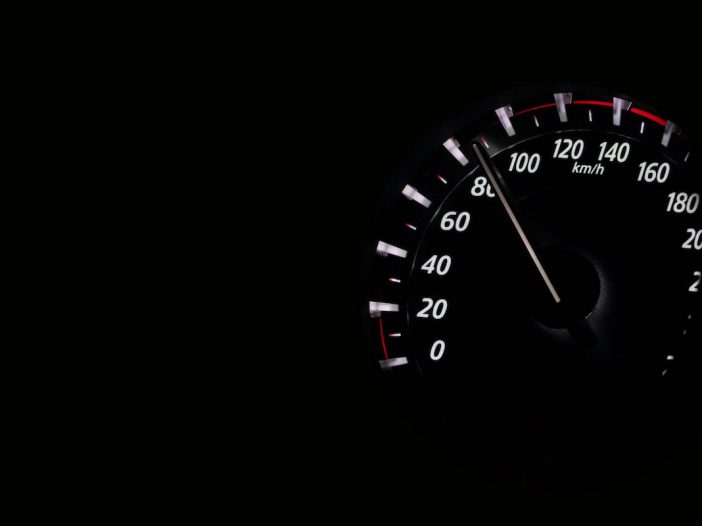
Breaking Down Driving While Impaired vs. DUI
Enforcing laws, setting up sobriety checkpoints, and requiring ignition interlock devices are just a few of the steps that have effectively reduced alcohol-impaired driving incidences, but drunk driving still remains a large problem in the United States.
Laws for drunk driving differ from jurisdiction to jurisdiction. Whether you’re traveling across state lines, moving, or just plain curious, it’s a good idea to understand these laws to protect yourself, protect those around you, and keep yourself out of trouble. Where some jurisdictions may refer to drunk driving charges as DUIs, you may hear others refer to them as DWIs. Let’s break down the difference between these two charges and what they entail.
Understanding DUI and DWI
DUI stands for “driving under the influence,” while DWI stands for “driving while impaired” or “driving while intoxicated.” The two main parts to any DUI or DWI charge are the operating of a vehicle and being under the influence.
Operating a vehicle usually involves driving your car or truck, but it can essentially comprise any sort of motor vehicle, including a tractor, motorcycle, or golf cart. You may even be charged with a DUI for riding a bike, skateboard, or horse while drunk. In certain stricter jurisdictions, you could be charged with a DUI or DWI if you were found in your car with the engine off and the key still in your pants, but in most states, you have to be in direct control of the vehicle while it is moving.
Depending on the state laws, the two terms can have different connotations.
Interchangeable Terms
In some states, DUI and DWI are two terms that be used interchangeably to refer to both alcohol-impaired driving and/or driving under the influence of certain controlled substances. In legal terms, some states may refer to a drunk driving offense as a DUI where others may refer to it as a DWI.
Differentiating Substances
In certain states, driving while intoxicated can refer to more than just alcohol and may include driving with drugs or substances other than alcohol in your system, while a DUI specifically refers to operating a vehicle with a BAC of 0.08 percent or higher.
Different Levels of Impairment
Finally, in other states, DUI and DWI charges are actually two separate offenses. Both are related to drunk driving, but DUIs refer to driving with a BAC under 0.08 percent while DWIs involve driving with a BAC of 0.08 percent or over.
Understanding Blood Alcohol Concentration
Before we get deeper into DUIs and DWIs, let’s make sure you have a clear understanding of BAC. BAC, or blood alcohol content or concentration, is a quantifiable measure of the amount of alcohol in your system.
It is often presented as percentage equivalent to the number of grams of alcohol per 100 milliliters of blood. So, for instance, if your blood alcohol concentration is at 0.05 percent, you have about 0.05 grams of alcohol for every 100 milliliters of blood in your body.
Your liver is responsible for metabolizing alcohol, and it can generally process one standard alcoholic drink per hour. When you have more than one standard drink per hour, your liver is unable to metabolize it all at once, so that excess alcohol gets stored in your blood and other body tissues, leading to a higher BAC that can last for several hours.
In the U.S., a standard drink is about 14 grams of pure alcohol, which is equivalent to:
- 12 fluid ounces of a regular beer (about 5 percent alcohol by volume)
- 9 fluid ounces of malt liquor (about 7 percent alcohol by volume)
- 5 fluid ounces of wine (about 12 percent alcohol by volume)
- 1.5 ounces of distilled spirits or liquor (about 40 percent alcohol by volume)
Blood alcohol content can be measured using your breath, blood, or urine. If you get pulled over for a DUI, the officer will likely test with a breathalyzer unit. Urine tests are being phased out for their potential unreliability, and blood tests are more often performed in hospitals or other medical facilities.
Although BAC is incredibly helpful for quantifying a person’s drunkenness, it’s important to understand that people process alcohol differently and at different rates. There are a wide range of factors that go into this, including genetics, body size and composition, and gender.
Even the mere act of having more food in your body prior to drinking can slow down how you process alcohol, allowing for a steadier increase in BAC, as opposed to sudden spikes in BAC when drinking on an empty stomach. This ultimately means that two different people could drink the same exact alcoholic beverage, in the same amount, and have drastically different blood alcohol concentrations and behaviors.
Behavior and BAC
All states have set their legal BAC limit at 0.08 percent. At a BAC of 0.15 percent, many states have extreme DUI laws and penalties. However, alcohol can have a significant effect on your thoughts, behaviors, and actions from the very first sip.
BAC 0.02 (about 2 drinks)
- Minor loss of judgment
- Slight body warmth
- General relaxation
- Altered mood
Even at the low BAC of 0.02 percent, your vision begins to decline such that you may have trouble tracking any sort of moving target or object. You may also have trouble dividing your attention and performing more than one task.
BAC 0.05 (about 3 drinks)
- Some loss of small-muscle control (like focusing your eyes)
- Generally exaggerated behaviors
- Impaired judgment
- General pleasant feelings
- Slight lack of inhibitions
- Reduced alertness
At 0.05 blood alcohol concentration, your ability to track moving objects is much more impaired. You will also experience reduced coordination and have difficulty steering your car. The reduced alertness also slows down your reactions, preventing you from properly responding to potential emergency situations while driving.
BAC 0.08 (about 4 drinks)
- Poor muscle coordination
- Impaired balance, speech, vision, hearing, and reaction time
- Reduced ability to detect danger
- Reduced judgment, memory, reasoning, and self-control
At this point you are legally over the BAC limit. Your concentration takes a severe dip, and you may suffer from short-term memory loss. You will have a much harder time controlling your speed on the road. All of your information capabilities will be heavily impaired, which means, for example, you may be unable to detect other vehicle’s turn signals. Your impaired perceptions will also make actually seeing what is in front of your car much more difficult.
BAC 0.10 (about 5 drinks)
- Clear and significant deterioration of personal control and reaction time
- Poor coordination
- Slurred speech
- Delayed thinking
You likely will not be able to stay in your lane or even brake properly.
BAC 0.15 (about 7 drinks)
- Significant loss of muscle control
- Extreme loss of balance
- Vomiting
At a BAC of 0.15 percent, you will likely have trouble staying awake, much less driving. You won’t be able to properly control your vehicle, and you certainly won’t be able to pay attention to the task of driving. All of your necessary visual and aural processing will see some substantial impairment.
Buzzed Driving
Buzzed driving refers to any instance of operating a vehicle with a BAC of 0.01 to 0.07 percent. Technically, this is still under the legal limit of 0.08, so you’re not breaking any rules. However, you are putting yourself and anyone around you at risk.
Researchers looked at data from over 570,000 fatal traffic crashes in the country between 1994 and 2011 and found that drivers with a BAC of just 0.01 percent were 46 percent more likely to be officially blamed for a crash.
This is where some states have begun to make differences between DUIs and DWIs. For example, Maryland has typical DUI offenses if you are driving with a BAC of 0.08, but you may be charged with a DWI if your BAC is 0.04 to 0.07 percent and the officer believes you to be a danger on the road.
Which One is Worse?
In states that do make a difference between DUI and DWI charges, DWI is usually the more serious charge that designates a person driving with a BAC of 0.08 or higher. However, every state has its own quirks, like the example of Maryland above, where DWIs are the less severe offense. Really, neither one is better or worse because both involve putting yourself at risk.
Generally, the higher your BAC, the more severe the crime and the penalties. A first offense DUI or DWI without any injuries, deaths, or damage to property are usually charged as misdemeanors. This is less severe than a felony, but it still comes with some serious penalties, including:
- Some jail time
- Fines and legal fees
- License suspension or revocation
- Completion of a drug and alcohol education and counseling program
- Installation of an ignition interlock device
Regardless of their specific meanings, both DUIs and DWIs mean that you put yourself and others in danger. They are both serious offenses that can come with various penalties that can put a great deal of pressure on you and change your life. It’s completely fine to enjoy an adult beverage, but always make sure you plan ahead.


